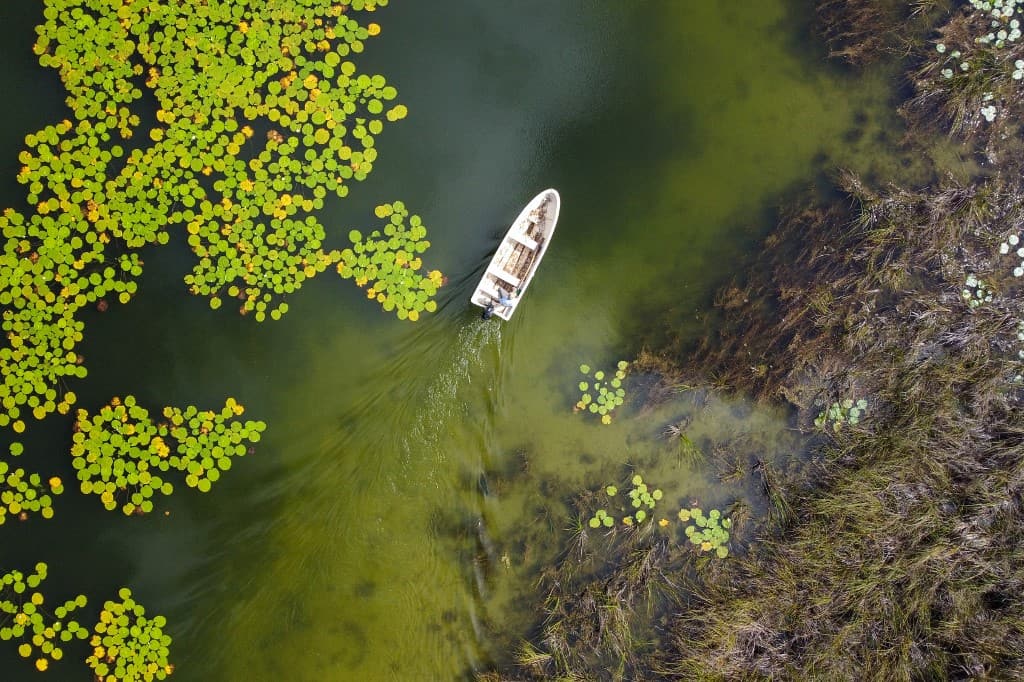Hacking away handfuls of grass with machetes, Leonel Acosta wages an unequal but hopeful fight to reclaim land deforested by illegal ranching in the heart of Guatemala’s Maya Biosphere Reserve, the largest protected area in Central America.
A blazing sun burns his back and the heat suffocates him. He is convinced, however, of the success of community forest management, a model that shows it is possible to curb deforestation, conserve the forest and its biodiversity, and feed the locals.
While growing crops or producing honey for self-sufficiency and selling the surplus in areas granted by the State, residents reforest with native species.
“They gave us a sea of grass, but look: we already have a restored forest,” Acosta said in La Colorada, one of the Reserve’s areas where that joint community and government effort, led by the NGO Wildlife Conservation Society (WCS), takes place.
Nestled in the north of the country, near the borders with Mexico and Belize, that immense 2.1 million hectare green stain occupying 19% of Guatemalan territory – the size of El Salvador – went from 20% deforestation to 33% between 2000 and 2022 due to timber trafficking, fires and mainly grass planting for cattle.
Vital because it houses varied wildlife and flora, lagoons and streams, it is also important for its ability to absorb CO2 to address climate change.
In its forests, the Mayas built the city of Tikal, Guatemala’s main archaeological site and a UNESCO world heritage site, which reached its peak between 200 and 900 AD.
Sea of grass
Vast grasslands can be seen from the road. Acosta, 35, prefers to pluck it. Burning it makes it grow back stronger. “It is the most important challenge (…). It is 600 hectares” of grasslands in La Colorada, he said.
This was one of the areas that the State gave in concession for sustainable production in the Reserve, where 200,000 people live. But it fell into the hands of squatters, some allied with drug traffickers who use the land to launder money through ranching or the landing of drug planes, residents say anonymously.
“Leaving the forest and arriving at the sea of grass is sad. It used to be jungle and now it is degraded,” says Acosta, from the Selva Maya del Norte organization, which brings together local residents.
The illegal cattle ranches are located by satellite. But judicial bureaucracy takes years to evict squatters, laments Apolinario Córdova, regional director of the National Council of Protected Areas (CONAP, state).
There is a need to “strengthen the inter-institutional presence,” he believes. There are military and police at the entrances to the Reserve, but the squatting continues.
Even so, more than 157,000 hectares have been recovered in the last 10 years. Some 45,000 already have forest cover and 3,500 are under restoration, according to WCS.
Sustainable restoration
With the ranchers gone, comes restoration. Since 2009, WCS has provided agricultural, forestry and beekeeping training to residents.
In La Colorada, one and a half year old cedars and mahoganies are gaining ground on the grass, and in the neighboring Cruce a La Colorada area, locals opted for an agroforestry model.
In Cruce a La Colorada they got rid of the grass and planted corn, beans, sweet potatoes and cassava, which grow among timber trees that will become productive for the community in 10 to 20 years.
“Maybe not us… but our children would be the generation that could take advantage of these little trees,” said 38-year-old resident Antonio Juárez.
The project is not without difficulties. In impoverished communities abandoned in the jungle for decades, some say they cannot wait. In San Miguel, 25-year-old Melsar Cardona thinks that cutting grass and harvesting honey is not enough to live on. Like other Guatemalans, he considers emigrating to the United States.
The forest is life
In the grasslands, cicadas and crickets replaced the birds. But with reforestation, jaguars, macaws and migratory birds are returning.
With a camera tied to a tree, Acosta and WCS experts confirm that return that helps disperse seeds, a passive forest restoration. “With every tree we plant (…) we feel like we are giving life to the whole world. It is a hope,” César Paz, WCS’s forest restoration coordinator, said.
Rony García, a WCS biologist, assures that the restored habitat “is once again allowing” a “balance in fauna and flora”.
It is also “having all that carbon stored there and not increasing global warming,” he celebrated. Environmental awareness seems to be spreading around here: “We know that the forest is life for us,” says Juárez.






